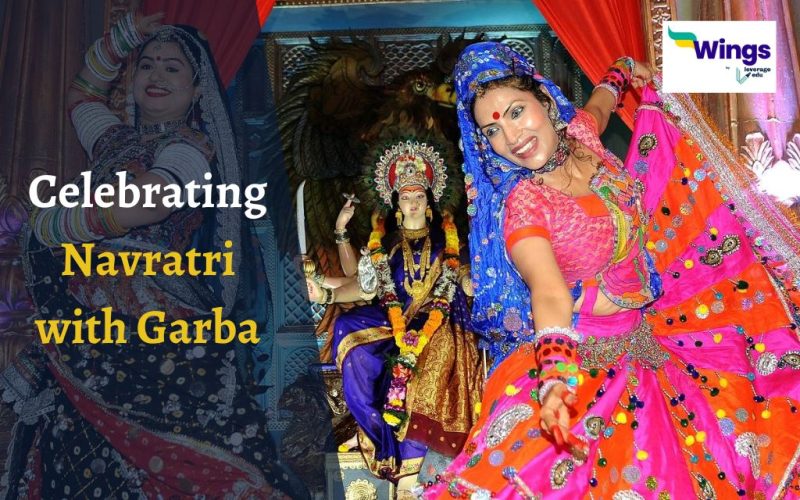The Gujarati dance tradition of garba is performed every October to celebrate Goddess Durga, the Hindu Deity of Divinity. Although Garba is typically performed during Navaratri celebrations, it is a sacred practice in Gujarat to perform this happy folk dance on practically all important occasions. Although some of these dances include men, young girls and women primarily perform Garba.
Garba, who has gained notoriety recently over the world, preaches the existence of divine energy within each and every person, empowering humanity. At one location, hundreds of people perform in groups with incredible pomp and circumstance. You can observe the lovely dance while in West India during the holiday season of October, and you can even participate.
Table of Contents
Origin of Garba
The word “Garba” derives from a Sanskrit word that means “womb” or “deep” and has a rich symbolic connotation. This folk dance has its roots in Gujarat and was first performed in Vadodara, which is now known as Gujarat’s cultural centre thanks to its strong religious influence. In addition to these names, garba is also known as garba deep and garbi depending on the regional tongue. The dance is performed with respect to womanhood and to honour fertility.
Significance of Garba in Hinduism
Around a light, which stands in for the human body carrying the spirit inside, the Garba dance is done. Garba demonstrates the limitless nature of life, death, and reincarnation as dancers encircle it in concentric circles, mirroring how Hinduism perceives time as a cycle. Goddess Durga and her power within the dancers’ spirits are eternal, even if the entire cosmos changes and evolves.
Indian Mythology about Garba
In Hindu mythology, Navaratri was observed to honour the victory of Goddess Durga over Evil, and Garba played a key role in demonstrating the deity’s might. Her sword was the most effective weapon for unleashing wrath against the demons in the havoc she had brought about in her quest for peace. In Garba, dandiya sticks are used to represent the goddess’ sceptre and invincibility.
Hindus celebrate Navratri, which is Hindi for “nine nights.” The Garba dance is performed for a period of nine nights as a gesture of respect to the goddess in Gujarat, but this event is celebrated in various ways across India. Late in the evening, the dances start, and they last until midnight. Men and women maintain particular diets throughout the nine days and nights of Navratri and eat only certain items in accordance with their respective religious beliefs. In addition to Navratri, Garba is practised at weddings, parties, social gatherings, the spring festival of Holi, and other occasions.
Popular Beliefs and Notions
The popular beliefs about Garba are listed below:
- The distinction between Garba dance and Dandiya dance is among the most perplexing ideas.
- Although they both come from Gujarat, they are both performed at various events. In Vrindavan Gardens, a dandiya is conducted in honour of Lord Krishna.
- While Garba features more hand gestures, clapping, and circular dance patterns, Dandiya also uses colourful sticks in performance.
- Garba is celebrated not only in Gujarat but also in other Indian states and abroad in places like Canada, the United States, and the Netherlands.
Quiz
Results
#1. Garba is the folk dance of which state?
#2. What is the meaning of word "Garba"?
#3. What does Garba symbolise?
This was all about Celebrating Navratri with Garba. Visit our General Knowledge Page to discover more intriguing articles about Art and Culture. Get in touch with the experts at Leverage Edu in order to kickstart your study abroad journey!
 One app for all your study abroad needs
One app for all your study abroad needs
















